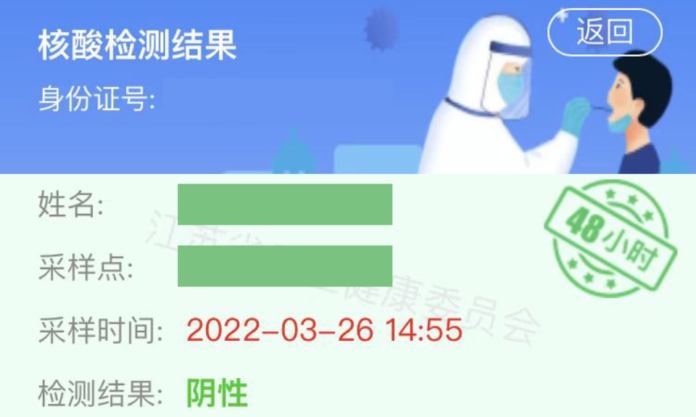More and more tests to come. That’s the reality sinking in today. And those tests are set to continue for quite some time after we get to “COVID zero”. Again, it all depends on where you live. Just be thankful that’s not Shanghai…
First the good news. With just one new positive case of COVID reported in Nanjing yesterday, we can say with confidence that we are at last getting somewhere. And with high schools back on campus, more areas being released from lockdown and some curtailed bus services back up running again, Nanjing appears to, for now, have a handle on Omicron.
That’s more than can be said for elsewhere. Shanghai has been the word on everyone’s lips today, as that city announced it would test every last one of its 26 million residents. It’s an unprecedented undertaking, which also represents quite a hit on the economy of Asia’s financial centre.
Large swathes of Shanghai which have been in lockdown for quite some time have led to concerning scenes of fights over food occurring in the city’s shops circulating on social media over the weekend.
Just as well then that Nanjing is on the case to help out its big sister. On Friday 25 March, a truck loaded with five tons of Chinese lettuce set out from Liuhe District of Nanjing to Shanghai’s Fengxian District. Donated by various enterprises and transported gratis, the vegetables were gifted to Shanghai University of Applied Technology, reports The Paper.
That same publication has today also revealed the contents of a press conference held yesterday, 27 March, which outlined how Nanjing shall be categorised as to nucleic-acid testing (NAT) requirements.
Make no mistake, where you live is now a “key area”, a “sub-key area” or a “prevention area”. And that dictates how many NATs you are going to get.
In key areas, defined as places with a positive case, there shall be conducted at least seven rounds of tests since discovery of the latest positive case, with the final round being 10 days from the date of discovery.
NATs in sub-key areas, defined as those with close personnel exchanges with at-risk areas outside of Nanjing, shall be conducted every 2 or 3 days.
Then there are the prevention areas, where testing shall be arranged by each individual district, according to their specific condition.
Finally for today, some alert readers will have noticed the rather cute stamp that has in recent days started appearing in the “NAT Query” (核酸检测查询) section of the Jiangsu Health Code app within Alipay.
A little like a stamp in your passport, that green-coloured chop marked “48 Hours” (48小时) can now be considered almost as important as such, as more and places in Nanjing demand to see it before allowing entry to the bearer.
And yes, The Nanjinger can confirm it is smart enough to magically disappear exactly 48 hours after the test was taken. Damn.









